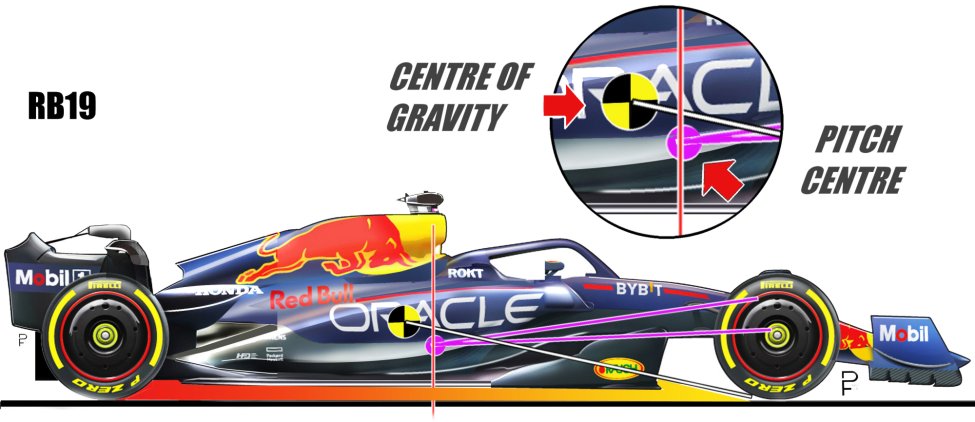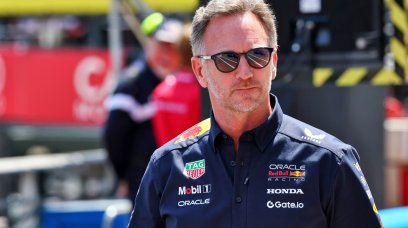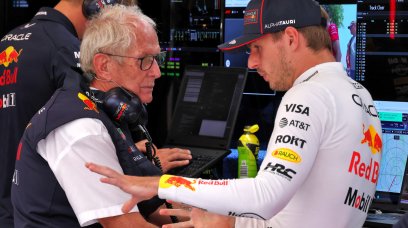The statistics show just how dominant the Red Bull RB19 of World Champion Max Verstappen and Sergio Perez was: 21 victories, 14 pole positions, five sprint race wins, 30 podium finishes, 860 points and 11 fastest laps.
It is the most successful Formula 1 car of all time, stronger than any effort fielded by the dominant Mercedes team from the previous decade.
It seems correct to ask questions for the future when the RB19's absolute and relative competitiveness are added up after a season like this.
Red Bull's form in 2023 was not the result of a constantly improved concept, courtesy of the RB19's continuous development. It was a triumphant march from the beginning of the season with no real obstacles in its way - Singapore being the exception. So what was so special about the RB19 that the other teams could not match?
Did Red Bull fully exploit the RB19's potential, or did they just do enough to overcome the competition?
By the winter tests in Bahrain, it was already clear that no one was going to close the gap.
Rather than analysing the characteristics of the car, it seems better to ask whether the Milton Keynes-based team has spared any expenses this season. The aerodynamic and tyre management advantages are clear, and several indications suggest that Red Bull had already shifted its focus to 2024 before the summer.
That was also a fear of the competition. The priorities for 2024 are to improve Red Bull's marginal weaknesses, regardless of its competitive advantage over the other teams.
In F1, we know very well that it is not very credible, and certainly not plausible, to stop the development of a car during the season, unless you find yourself in two diametrically opposite situations.
Viewed by others:
By the winter tests in Bahrain, it was already clear that no one was going to close the gap.
Rather than analysing the characteristics of the car, it seems better to ask whether the Milton Keynes-based team has spared any expenses this season. The aerodynamic and tyre management advantages are clear, and several indications suggest that Red Bull had already shifted its focus to 2024 before the summer.
That was also a fear of the competition. The priorities for 2024 are to improve Red Bull's marginal weaknesses, regardless of its competitive advantage over the other teams.
In F1, we know very well that it is not very credible, and certainly not plausible, to stop the development of a car during the season, unless you find yourself in two diametrically opposite situations.
Why did Red Bull stop developing the RB19?
It's simply a waste of time and resources to continue development on a car that is clearly "wrongly" designed. If a car is clearly superior to its rivals, stopping development in the short term is justified.
Usually, this is replaced by a series of tests of new parts that should be part of the next project, to make efficient use of time in the current season.
Red Bull followed the second path and developed the car through to the summer break, with a minimal number of updates in the second part of the season. They did this by mainly introducing elements at a fundamental level, already partly anticipating next year's RB20.
It is known what characteristics Red Bull can still improve and the RB19 served as the basis for that. Since the Monaco Grand Prix, Red Bull chose to set up the cars extremely low, even on street circuits. That became clear when Perez crashed in the principality and his car was lifted by a crane.
The secrets of the floor, if they were there, would have been revealed on that occasion, although it is equally clear that the specific shape of the floor characterized by large areas of discontinuity in the profile of the Venturi channels ensured considerable stability of the aerodynamic centre of pressure. The Venturi channels, in turn, ensured that front and rear oscillations were reduced.
It was only one piece of the puzzle, which was made effective by the suspensions. Over the course of the season, it became clear that it was about the specific geometry and adjustments, particularly in terms of ride height and not so much about the pull rod at the front and the push rod at the rear. In essence, what became increasingly clear was that Red Bull had managed to find a perfect link between the RB19's dynamic set-up and aerodynamics.
The suspensions not only work to counteract the effects of downforce variations between the front and rear, but are also able to minimize them. In essence, it looks like the RB19 has an active mechanical suspension within a well-defined tuning range. Clear evidence of this was provided by the events in Singapore and it is perfectly legal within the regulations.
Viewed by others:
What went wrong in Singapore?
In Singapore, it turned out that any additional adjustments to the torsion bars and shock absorbers did not actually have a positive effect on the car's behaviour. This situation also occurred less noticeably in Las Vegas, with a less precise car and a different approach to entering and exiting corners. It is no coincidence that Red Bull had cautiously adopted unusual ride heights in Las Vegas, unlike other teams (for example, Ferrari).
If there is a secret lurking in the RB19, it is the perfect integration between the car's aerodynamic and dynamic performance including mechanical grip, adhesive grip and the grip of the Pirelli tyres. It could almost be dared to say that the advantage over the competition was created precisely by analysing these parameters and refined enough by using a tool, or rather a set of tools, in Italy.
It could certainly be considered that this is the ultimate key to Red Bull's success, but the precise utilization of Pirelli's MTS laboratory in Milan, which is available to each team (subject to change) for a total of eight hours per season (which is often utilized in January), would have made it possible to fine-tune the adjustments. That starts with parameters related to tyre load, characteristic angles and drift angles that made the RB19 perfect.
The air intakes
In Hungary, the latest development of the RB19 was clearly visible. The area where the wind enters the air intakes has been reduced to a 'letterbox', reducing the car's drag and further freeing up direct flow to the lower part of the sidepods.
The floor
The floor was revealed by Perez's accident during qualifying in Monaco. We see the large areas of discontinuity both in front and behind the Venturi channels.
Determination of the center of gravity
The effect of the dynamics of the car to confirm the aerodynamic effects is very significant. Essentially, the RB19 was characterized by reduced vertical movements between the front and rear, both thanks to the distribution of the aerodynamic load and the position of the center of pressure, and by the damping of the oscillations thanks to the specific geometry of the suspensions.
Don't miss out on any of the Formula 1 action thanks to this handy 2026 F1 calendar that can be easily loaded into your smartphone or PC.
Download the calenderMost read
In this article















Join the conversation!